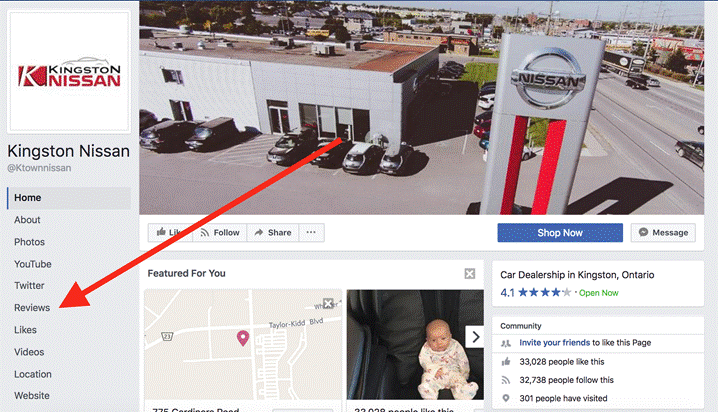
We’re all influenced by online product reviews, whether they’re positive or negative. 61% of customers read online reviews before making a purchase decision. They help eliminate doubt among potential customers and also play a role in your search engine rank by creating new content for spiders to crawl.
As a business, it’s important to harness the power of your customer’s opinions and encourage each individual to leave you a positive review. But hinting to your customers that you’re working on your five star strategy is always a little awkward for you and can be annoying to them.
Use these tips to get more positive customer reviews without nagging them:
Start With An Optimized Checkout & Website
If it’s easy to navigate your website and complete a purchase, you’ll start off on the right foot with your new customers. If it’s difficult, they’ll be frustrated right off the bat which can snowball into a poor experience and spark a negative review. Optimize your checkout process by minimizing the number of steps and leveraging customer reviews and trust badges.
Choose Where To Focus
There are several different websites where customers can leave reviews on your products and business. Here are a few:
- Your website
- Google My Business
- Yelp
- LinkedIn Recommendations
- Google Places
- Yahoo! Local
- TripAdvisor
- Amazon
- Etsy
- Glassdoor (employee reviews can sway potential customers, too!)
- Yellow Pages
- Better Business Bureau
Try to stick to 1-2 sites to collect a large number of reviews rather than spreading a few reviews across several sites. Start by focusing on the sites where you have the most reviews and create your strategy from there.
Email Your Customers
Building relationships with your customers after they’ve purchased from you is just good business practice. Send your customers an email from a real person (as opposed to appearing as ‘Company ABC’ in the customer’s inbox) to check in and ensure they’re satisfied with their purchase. Even better if the customer will recognize the sender’s name!
Leverage email best practices and be as personal as possible. Once you’ve followed up and opened the line of communication, feel free to politely ask for a review. You can request a review for the specific product they purchased, subtly weave it into an email with an alternative goal, or include a link in your email signature.

Social Media
Social media is an excellent want to engage with your customers. On Instagram, search through your tagged photos and look up branded hashtags for your products. Evangelists are everywhere on Instagram so you may need to get creative when looking for hashtags by trying different variations. Send direct messages to the individuals who have posted about your business and thank them for sharing, with a polite request for a more formal review.

On Facebook, your reviews and star ranking are one of the first things a user sees upon visiting your Page. To collect reviews, make sure your reviews tab is activated. This is done through your Page Settings under General.

Some companies have private Facebook groups for customers. This would be an ideal opportunity to pop your head in and share a link to the site you’re collecting reviews on.
Retargeting Ads On Facebook
Retargeting ads on Google’s Display Network can be useful for encouraging conversions, but may not be ideal to request a review. A good opportunity to show your customers retargeting ads is on Facebook because they are typically perusing their news feed and not actively searching for something. Just be sure to avoid annoying your customers by capping the frequency at which they see the ad.
Create A Testimonials Page On Your Website
There’s extensive data showing that your customers are using reviews and testimonials in their shopping process regardless of your business model, but B2B businesses can particularly benefit by sharing success stories. Not only does this allow you to build trust with site visitors, but your customers get the additional exposure as well.
Consider reaching out to past customers to be featured on your testimonials page if your website attracts visitors that would be a good fit for your customer’s products or services.
Respond To Your Reviewers
There should be someone at your company that’s responsible for monitoring reviews and responding to each one, whether they’re positive or negative. When people see that your customer’s satisfaction is important to the business, they may be more likely to share their experience if they’ve purchased from you. It can also help reduce apprehension if an individual is on the fence about purchasing from you.
Share Your Strategy With The Team
Turn these tips into a formal customer review strategy to share with your team. Communicate the importance of positive customer reviews. Chances are, some of your colleagues keep in touch with customers and may have personal relationships with them. You can also offer your team members an incentive for the number of positive reviews they can collect!
Conclusion
Getting positive customer reviews may take some elbow grease, but the rewards can be extremely beneficial for the entire company. Build your review strategy into your overall marketing plan to ensure it’s a consistent effort that’s embraced across all departments.
Hand-Picked Related Articles:
- How Do Online Reviews Affect Your Search Engine Rankings
- How to Encourage User Reviews: Tips for Small Business
- How To Prevent & Manage Negative Online Reviews
* Adapted lead image: ![]() Public Domain, pixabay.com via getstencil.com
Public Domain, pixabay.com via getstencil.com
